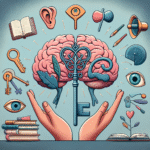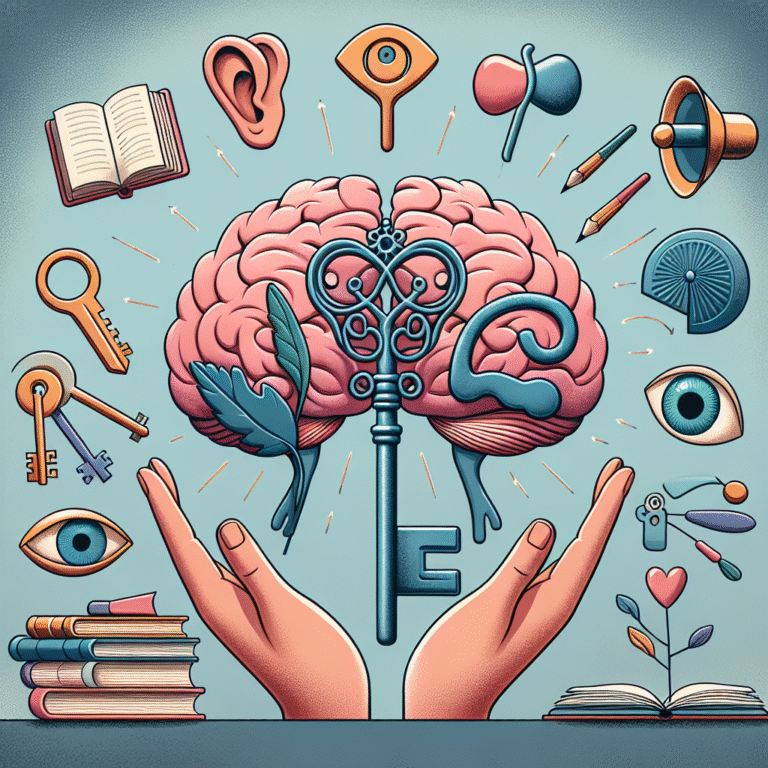
Dyslexia Decoded: Myths vs. Facts About Learning Disabilities – The Ultimate Guide to Understanding and Overcoming Challenges
Introduction
Imagine a world where the complexities of language aren’t just puzzles to solve but seemingly insurmountable obstacles. This reality often reflects the lives of individuals with dyslexia. Unfortunately, the term "dyslexia" is often shrouded in misunderstanding and stigma. As we unfold the layers in “Dyslexia Decoded: Myths vs. Facts About Learning Disabilities,” we aim to break down these misconceptions, providing clarity, support, and actionable insights. Understanding dyslexia is not just crucial for educators and parents but for society as a whole. It’s time to move past the myths, embrace the facts, and create a more inclusive environment for individuals with learning disabilities.
Section 1: What is Dyslexia?
Dyslexia is a specific learning disability that impacts reading and related language-based processing skills. Although it is often identified in childhood, its effects can persist into adulthood. The International Dyslexia Association describes dyslexia as having a neurological basis and impacting individuals across various intellectual averages.
Key Characteristics of Dyslexia
- Difficulty with phonological awareness
- Challenges in decoding words
- Struggles with spelling and writing
- Slow reading rate and comprehension issues
Dyslexia is not indicative of a person’s intelligence; in fact, many individuals with dyslexia possess above-average creativity and problem-solving skills. Understanding this nuanced reality is a critical step in demystifying the challenges they face.
Section 2: Myths vs. Facts
In “Dyslexia Decoded: Myths vs. Facts About Learning Disabilities,” we will tackle some prevalent myths surrounding dyslexia, juxtaposed with facts that paint a clearer picture.
Myth 1: Dyslexia is a Sign of Low Intelligence
Fact: Dyslexia affects individuals of all intelligence levels. Many people with dyslexia excel in areas unrelated to reading, such as the arts or mathematics. Notable figures like Albert Einstein and Agatha Christie are only a few examples of those who thrived despite their dyslexia.
Myth 2: People with Dyslexia See Letters Backward
Fact: The notion that individuals with dyslexia consistently see letters backward is a simplification of their experience. While some may have visual processing challenges, dyslexia is largely about phonological processing and the mapping of sounds to letters rather than visual distortions.
Myth 3: Dyslexia Can Be Outgrown
Fact: While early intervention and support can significantly help individuals manage their dyslexia, it is not something that can be "outgrown." Dunn’s 2004 study illustrates that continuous support throughout an individual’s academic career is essential for long-term success.
Myth 4: All Learning Disabilities are Alike
Fact: Learning disabilities, including dyslexia, dyscalculia, and dysgraphia, each have unique characteristics and challenges. They require tailored educational strategies to best support each individual’s needs.
Myth 5: Using Technology in Learning is Cheating
Fact: Assistive technology can be a powerful tool for individuals with dyslexia, enabling them to access information in different formats. Tools like audiobooks or speech-to-text software enhance learning opportunities rather than diminish them.
By dissecting these myths, “Dyslexia Decoded: Myths vs. Facts About Learning Disabilities” seeks to foster a better understanding of dyslexia among peers, educators, and policymakers.
Section 3: Real-World Applications and Case Studies
To illustrate the implications of dyslexia in educational and social contexts, we will explore several case studies that provide insight into the real-life experiences of individuals with dyslexia.
Case Study 1: John – The Creative Mind
John is a 10-year-old diagnosed with dyslexia. Initially, he struggled in a traditional classroom setting, experiencing frustration and a decrease in motivation. After his diagnosis, teachers implemented a multi-sensory approach to learning, incorporating visuals, auditory cues, and hands-on activities.
Relevance:
This approach not only improved John’s reading skills but also ignited his passion for art and storytelling, serving as a reminder of the strengths that can emerge when tailored strategies are applied.
Case Study 2: Sarah – The Entrepreneur
At 25, Sarah is a successful entrepreneur in tech, an industry where reading proficiency is crucial. Diagnosed with dyslexia in high school, she embraced assistive technology early on.
Relevance:
Her use of text-to-speech software allowed Sarah to absorb complex information effectively, showcasing that individuals with dyslexia can thrive in competitive fields with the right tools and support.
Case Study 3: Mark – The Advocate
Mark is now a public speaker advocating for individuals with learning disabilities. After facing significant hurdles in his academic journey due to dyslexia, he launched a campaign to raise awareness and fight stigma.
Relevance:
Mark’s journey highlights the importance of advocacy in public perception and policy change regarding dyslexia and learning disabilities.
Section 4: Strategies for Support
In “Dyslexia Decoded: Myths vs. Facts About Learning Disabilities,” it becomes clear that strategic support measures are essential in empowering individuals with dyslexia. Here are effective strategies through the lens of educators, parents, and individuals themselves.
For Educators:
- Differentiated Instruction: Tailor lessons to accommodate different learning styles and abilities.
- Utilization of Technology: Introduce tools like audiobooks, spell-checkers, and specialized software.
For Parents:
- Foster a Positive Environment: Encourage a growth mindset and celebrate small victories.
- Seek Professional Help: Consider tutoring or specialized programs focusing on dyslexia.
For Individuals:
- Self-Advocacy: Understanding one’s learning needs can empower individuals to communicate them effectively.
Section 5: The Role of Awareness and Advocacy
Awareness plays a crucial role in reshaping societal perceptions around dyslexia and learning disabilities. By debunking myths and encouraging fact-based understanding, we can foster environments that are supportive and considerate of these challenges.
Advocacy Organizations
Many organizations, like the International Dyslexia Association, actively promote public awareness. Engaging with such platforms can enhance community support and resources.
Conclusion: Breaking Barriers Through Understanding
As we navigate through “Dyslexia Decoded: Myths vs. Facts About Learning Disabilities,” our objective becomes clearer: to eliminate stigma, embrace understanding, and advocate for support. Individuals with dyslexia have unique gifts to offer the world, and with the right strategies and support structures in place, they can thrive. Our efforts to educate ourselves and others are vital in inspiring change and breaking down barriers.
FAQs Section
1. What are the symptoms of dyslexia?
Dyslexia symptoms can include difficulty reading, spelling problems, sluggish processing of information, and challenges with written expression.
2. Can dyslexia be diagnosed?
Yes, dyslexia can be diagnosed through comprehensive assessments by educational psychologists or special education professionals.
3. What interventions are available for dyslexia?
Interventions can include specialized reading programs, tutoring, and assistive technology, all aimed at improving literacy skills.
4. Is dyslexia hereditary?
Research indicates that dyslexia can run in families, suggesting a genetic component and that the condition is often inherited.
5. Can someone with dyslexia lead a normal life?
Absolutely! Many individuals with dyslexia successfully pursue higher education and excel in their careers, particularly when they receive the appropriate support.
6. Where can I find resources for dyslexia support?
Numerous organizations, such as the International Dyslexia Association and local educational authorities, provide resources and support for individuals with dyslexia and their families.
Understanding dyslexia is just the beginning. Let’s commit to further exploration of these realities, empowering those with learning disabilities by sharing knowledge and fostering an inclusive society.






